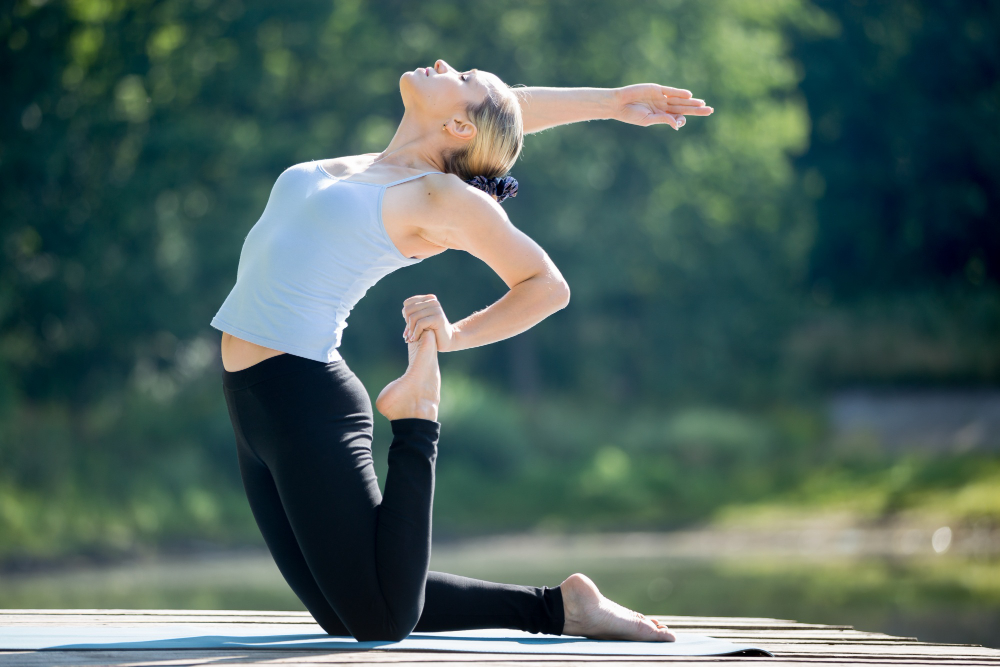Introduction:
Stretching is a fundamental component of any well-rounded fitness routine, playing a crucial role in enhancing flexibility, preventing injuries, and improving overall performance. In this comprehensive guide, we will delve into the science behind stretching, exploring the benefits, different types of stretches, and best practices to help you optimize your flexibility and reduce the risk of injuries.
Section 1: The Physiology of Stretching
1.1 Understanding Muscle Fibers:
- Explain the structure of muscle fibers and how stretching impacts them. Explore the concepts of muscle elasticity and plasticity.
1.2 The Role of Connective Tissues:
- Discuss the importance of connective tissues, including tendons and ligaments, in the stretching process. Highlight how proper stretching can contribute to their flexibility and resilience.
Section 2: Types of Stretches
2.1 Static Stretching:
- Define static stretches and discuss when they are most beneficial. Provide examples of static stretches for various muscle groups.
2.2 Dynamic Stretching:
- Explore the dynamic stretching approach, explaining its benefits in warming up muscles and preparing the body for more intense physical activity. Include dynamic stretching routines for different activities.
2.3 Proprioceptive Neuromuscular Facilitation (PNF):
- Introduce PNF stretching techniques, emphasizing their effectiveness in improving flexibility through a combination of stretching and contraction. Include step-by-step instructions for PNF stretching.
Section 3: Benefits of Regular Stretching
3.1 Improved Flexibility:
- Discuss how consistent stretching leads to increased joint range of motion and enhanced flexibility, contributing to better overall movement.
3.2 Injury Prevention:
- Highlight the role of stretching in preventing injuries by improving muscle and joint function, reducing muscle imbalances, and enhancing body awareness.
3.3 Enhanced Performance:
- Explain how incorporating stretching into a routine can optimize athletic performance by promoting efficient movement patterns and reducing the risk of strain.
Section 4: Best Practices for Effective Stretching
4.1 Warm-Up Prior to Stretching:
- Emphasize the importance of warming up before stretching to increase blood flow to muscles and prepare them for elongation.
4.2 Proper Technique:
- Provide detailed instructions on the correct technique for each type of stretch, ensuring individuals perform stretches safely and effectively.
4.3 Consistency and Duration:
- Discuss the significance of consistent stretching and recommend optimal durations for different types of stretches to achieve long-term benefits.
Section 5: Stretching and Specific Activities
5.1 Stretching for Runners:
- Tailor stretching advice for runners, focusing on stretches that target muscles commonly used during running activities.
5.2 Stretching for Weightlifters:
- Provide specific stretches to benefit weightlifters, addressing common tightness issues and promoting flexibility in key muscle groups.
Conclusion:
Incorporating proper stretching techniques into your fitness routine is a science-backed approach to enhance flexibility, prevent injuries, and elevate your overall performance. By understanding the physiology behind stretching and following best practices, you can embark on a journey towards improved flexibility, reduced muscle tension, and a healthier, more resilient body. Remember, consistency is key, so make stretching an integral part of your daily routine for lasting benefits.

